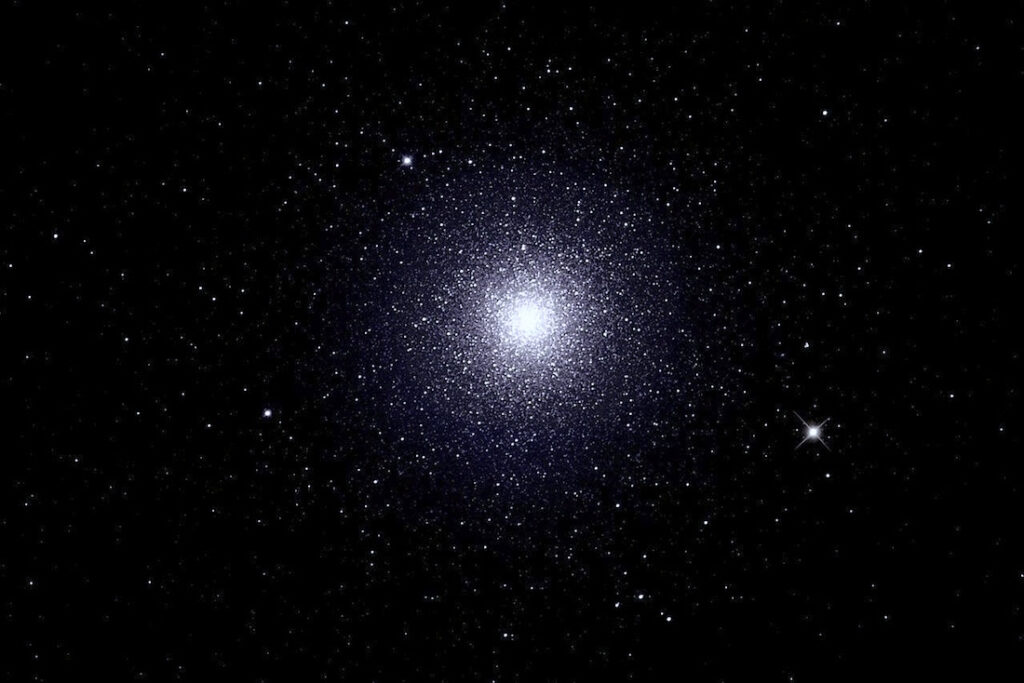A spectacular globular star cluster in Canes Venatici containing a half a million stars. About 150 globular clusters have been observed in our Milky Way galaxy. Most of them are far from the core in the "halo" that surrounds our galaxy. In recent years, astronomers have discovered that the "rotational velocity" of globular clusters is nearly identical to the rotational velocity of our Sun, even though they are much farther from the galactic core. Normally (according to Kepler's second law of planetary motion) stars farther from a galaxy's center should have a slower rotational or orbital velocity. The only possible explanation for the unexpectedly fast velocity of globulars is that there must be considerable mass within the orbit of their rotation around the galactic center (according to the following modification of Kepler's third law of planetary motion, M = v^2*R/G). In fact, the amount of mass that would account for their rotational speed is about 5 times what we actually see! The rest is what astronomers call "dark matter." Finding this dark matter is one of the greatest challenges of modern astronomy.
Charles Messier discovered this cluster in 1764 using a 12" telescope. His description, which reveals much about the quality of his instrument, was: "It doesn't contain any stars."
Globular Star Cluster M3 in Canes Venatici
Date Taken:April 14, 2010
Location Taken: Conditions of Location:FWHM 2.7
Equipment Used:14.5" Ritchey-Chretien telescope, SBIG STL11000 CCD camera, Astrodon RGB filters, TCC, PIR, remote guide head used with Takahashi Sky90 for autoguiding, T-Point used for polar alignment (required for each imaging session due to my portable setup).
Processing Used:6 x 300 seconds luminance, 7 x 200 seconds RGB, guided (using a remote guide head and Takahashi Sky90 refractor telescope), 1x1 binning, processed in Maxim DL and Photoshop (total exposure 1 hour 40 minutes).
Distance from Location:34,000 light years
Constellation:Canes Venatici (the "hunting dogs")
Other Link:
